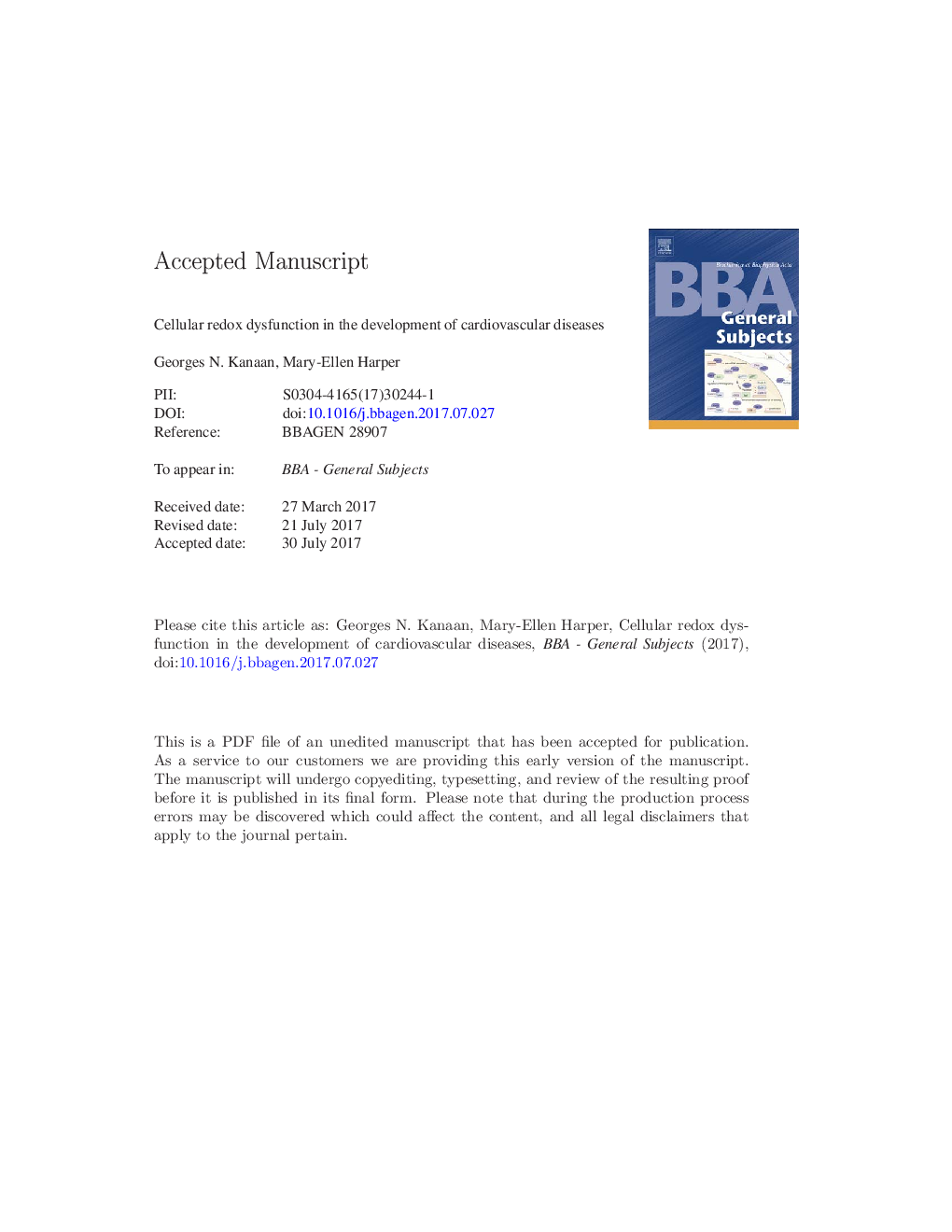| کد مقاله | کد نشریه | سال انتشار | مقاله انگلیسی | نسخه تمام متن |
|---|---|---|---|---|
| 5507844 | 1537481 | 2017 | 23 صفحه PDF | دانلود رایگان |
عنوان انگلیسی مقاله ISI
Cellular redox dysfunction in the development of cardiovascular diseases
ترجمه فارسی عنوان
اختلال ردیابی سلولی در توسعه بیماریهای قلبی عروقی
دانلود مقاله + سفارش ترجمه
دانلود مقاله ISI انگلیسی
رایگان برای ایرانیان
کلمات کلیدی
موضوعات مرتبط
علوم زیستی و بیوفناوری
بیوشیمی، ژنتیک و زیست شناسی مولکولی
زیست شیمی
چکیده انگلیسی
To meet its exceptionally high energy demands, the heart relies largely on fatty acid oxidation, which then drives the oxidative phosphorylation system in mitochondria. Each day, this system produces about 6Â kg of ATP to sustain heart function. Fatty acid oxidation is sometimes associated with high rates of mitochondrial reactive oxygen species (ROS) production. By definition, ROS are singlet electron intermediates formed during the partial reduction of oxygen to water and they include radical and non-radical intermediates like superoxide, hydrogen peroxide and hydroxyl radical. Superoxide can also interact with nitric oxide to produce peroxynitrite that in turn can give rise to other radical or non-radical reactive nitrogen species (RNS) like nitrogen dioxide, dinitrogen trioxide and others. While mitochondrial and cellular functions can be impaired by ROS if they accumulate, under normal physiological conditions ROS are important signaling molecules in the cardiovascular system. A fine balance between ROS production and antioxidant systems, including glutathione redox, is essential in the heart; otherwise the ensuing damage can contribute to pathogenic processes, which can culminate in endothelial dysfunction, atherosclerosis, hypertension, cardiac hypertrophy, arrhythmias, myocardial ischemia/reperfusion damage, and heart failure. Here we provide a succinct review of recent findings.
ناشر
Database: Elsevier - ScienceDirect (ساینس دایرکت)
Journal: Biochimica et Biophysica Acta (BBA) - General Subjects - Volume 1861, Issue 11, Part A, November 2017, Pages 2822-2829
Journal: Biochimica et Biophysica Acta (BBA) - General Subjects - Volume 1861, Issue 11, Part A, November 2017, Pages 2822-2829
نویسندگان
Georges N. Kanaan, Mary-Ellen Harper,
